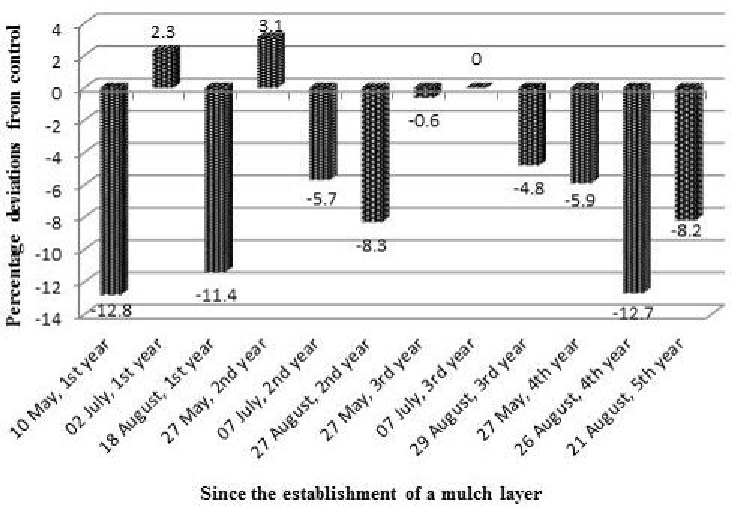Agriculture Reference
In-Depth Information
Figure 3. Effect of bentonite clay ploughed in the 0-5 cm soil layer on hydrolytic acidity of the arable
layer, % deviations from control (no ameliorant).
E
FFECT OF
B
ENTONITE
C
LAY ON THE
C
HEMICAL
P
ROPERTIES
Creating a mulch layer of bentonite clay contributed to a slight increase in the content of
organic matter in the arable layer (Figure 4). The average for five years its amount, compared
with the control, increased by 4.4% with a high authenticity level. The rise of humus content
is explained stabilizing influence exerted by clay minerals on organic matter of soil.
Lgotski (Lgotski, 1979) found that bentonite clay increases the accumulation of simple
organic compounds, from humus andfulvic acids. It should be noted that the application of
high doses of this ameliorant leads to slower decomposition of organic substances and
humification of crop remains in the soil, which is not always a positive process.
During the growing season was observed dynamics of change in the content of organic
matter, its maximum increase was observed at the end of the growing season, after entering
into the soil with fresh organic crop residues, the minimum - in the months of June and July
(the peak of its mineralization process). While stirring 8 t-ha
-1
bentonite with 0-20 cm layer of
soil, increase of the content of organic substances in our experiments was not observed.
Bentonite clay and methods of its incorporation into the soil have a different effect on the
content of mineral nutrients in the soil. So, mixing it with a soil layer 0-5 cm has increased in the
arable horizon of labile phosphorus content of 6.4% with a high authenticity level (Figure 5).
Apparently, this is due to improvement of phosphatic regime and a positive sorption of
phosphates by bentonite clay. The mechanism of absorption anions by montmorillonite is
very complex and still not sufficiently explored.


Search WWH ::

Custom Search